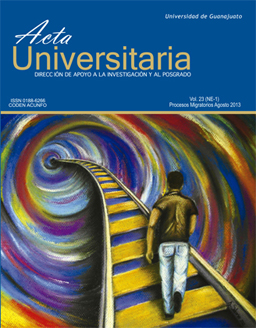Migration and development in the Lerma-Chapala region in the state of Michoacan
Published 2013-11-30
Keywords
- Pobreza,
- ingreso,
- marginación,
- economía familiar.
- Poverty,
- income,
- marginalization,
- family economy.
How to Cite
Abstract
The economic development is determined based on the quality of life. This development implies a sustained improvement in social welfare. The aim of this paper is to analyze the current state of development in the Lerma-Chapala region in the state of Michoacan, considering the rate and extent of marginalization and its influence on the migration of its inhabitants. The methodology was based on a review of data from the National Population Council in 2000-2010 regarding municipal exclusion rates and migration flows to the United States in 2000 and 2010. The municipalities that showed the highest levels of marginalization were those that had higher migration rates. In Michoacan, migration is encouraged by the lack of family income, marginalization, and the absence of satisfiers that provide a good quality of life. The inhabitants of the Lerma-Chapala region have maintained a high position in the national migration ranking for nearly one hundred years because they are not able to provide for their families and they live with high poverty levels.

